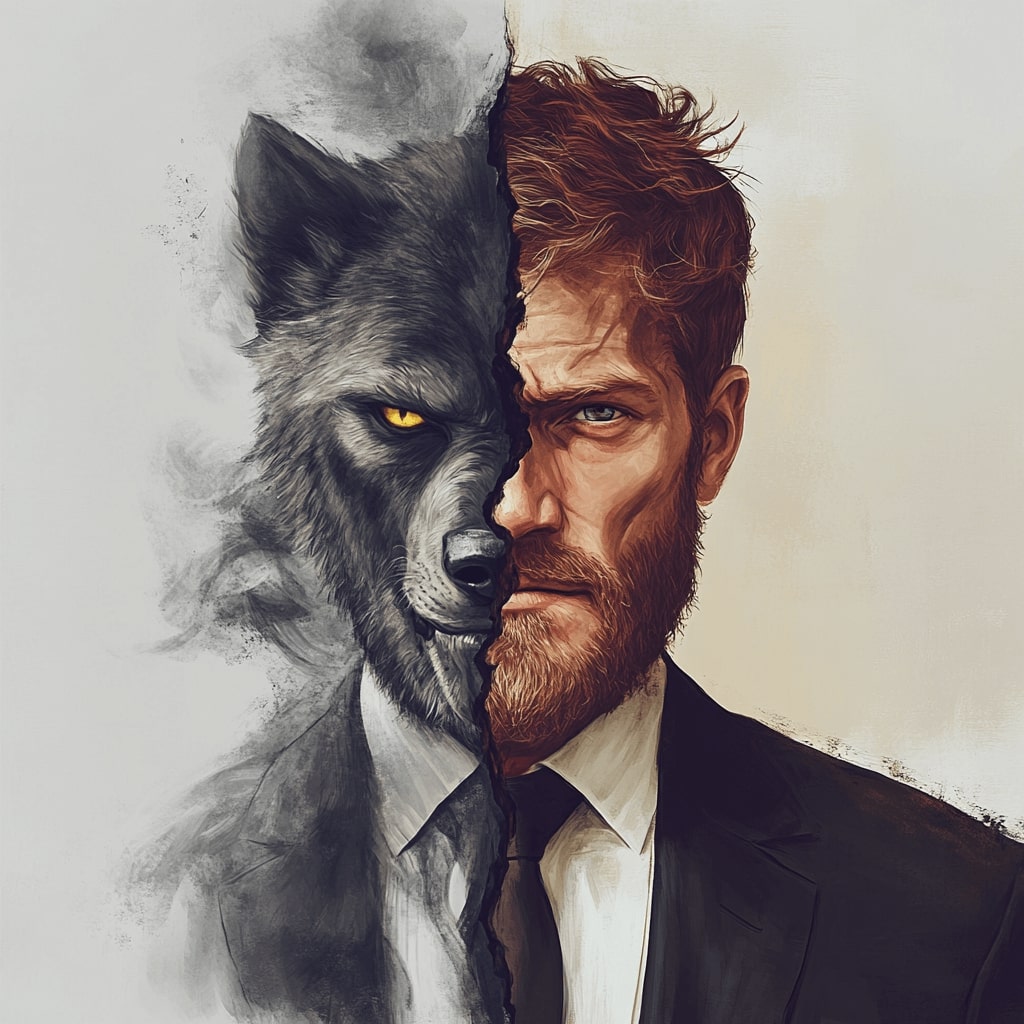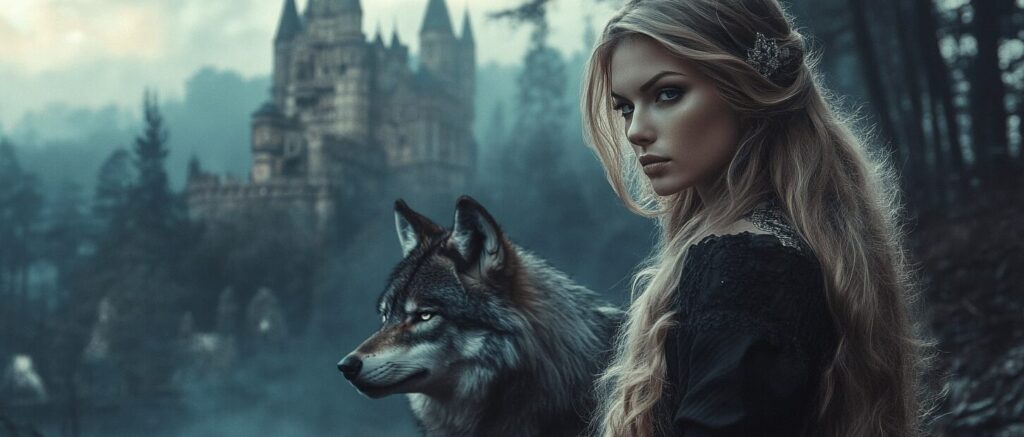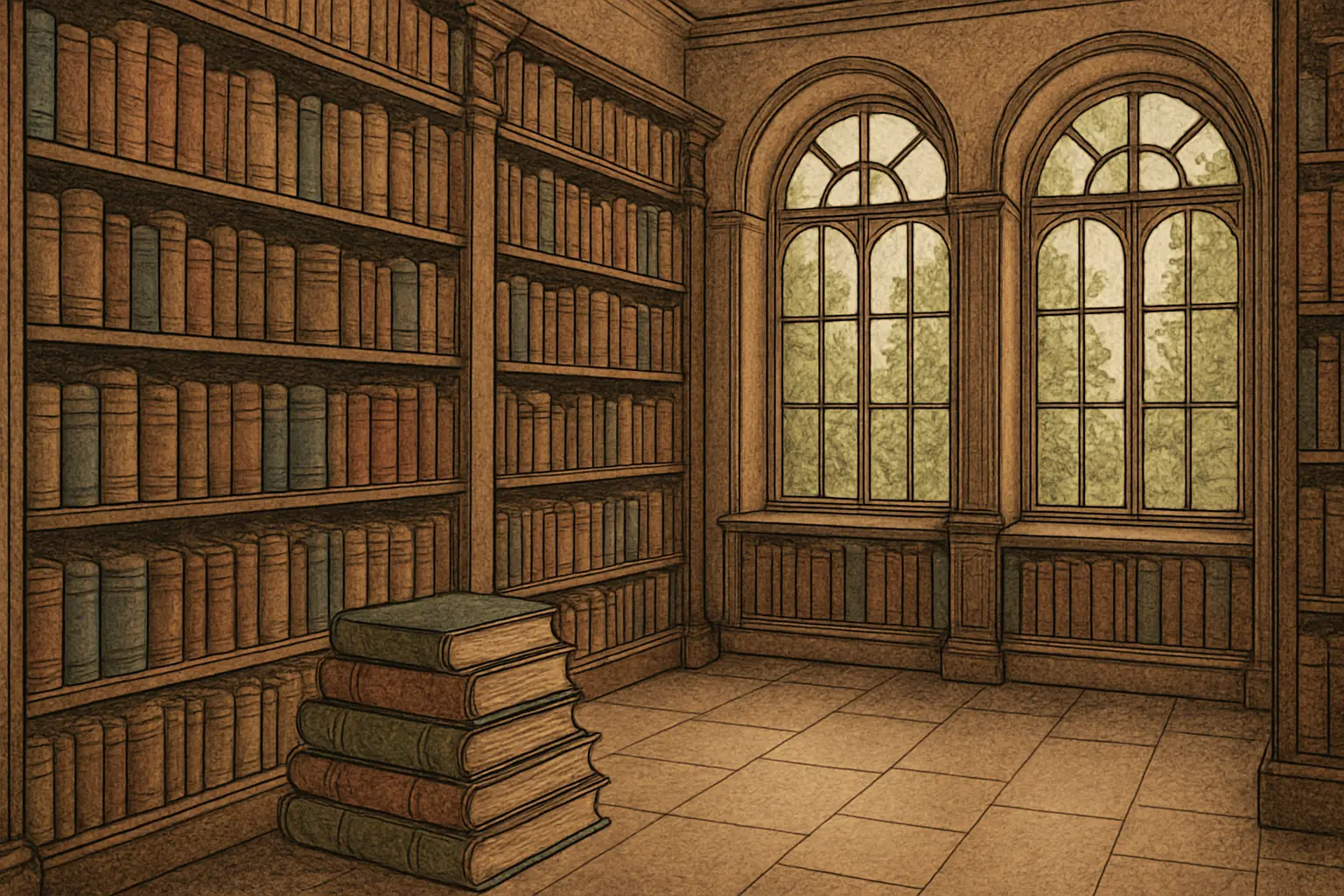Table of Contents
ToggleYou might think that you know everything about werewolf transformation. And rightfully so – it was depicted in movies and books so many times, that I get it. And yet.
Did you know that it’s not all about a full moon when it comes to werewolves? Yes, that’s right. It is very common to write about creatures that transform “once in a blue moon” (pun intended).
But that does not cover all the possibilities in werewolf lore.
In certain legends, a werewolf can transform at will or under intense emotional stress, making the transformation much more unpredictable and tied to their psychological state rather than lunar cycles.
The Process of Werewolf Transformation
Let’s dive into the thrilling process of werewolf transformation: how do you become a werewolf, really?
Whether you’re a fan of folklore or just curious about these mythical creatures, understanding how they transform can be quite an adventure!
1. The Trigger
- Full Moon: In many stories, the full moon is the classic trigger. When the moon is at its peak, it casts a spell that brings out the wolf within.
But we already know that. What is surprising is that there are two other factors that can initiate a transformation. Those are:
- Emotional Stress: Some tales suggest that intense emotions like anger or fear can trigger the transformation. Imagine a werewolf changing in the heat of the moment! My favorite example of this is Chapter 6 of the book Bitten By The Alpha, where the love interest shifts out of anger when our main character tries to escape him.
- Hereditary: Born with the curse, some werewolves can transform at will, anytime they want or need to. For instance, in Hated By My Mate, Alpha Wolfgang forces the protagonist to shift back into human form using his alpha voice.
2. Physical Metamorphosis

- Initial Signs: It often starts with a tingling sensation or a burning heat coursing through the veins. Goosebumps, rapid heartbeat, and increased body temperature are common.
- Muscle and Bone Reshaping: This is where the magic happens. Bones begin to shift, elongate, and reshape. Muscles grow and reposition themselves to support the new form.
- Growth of Fur and Claws: Thick fur sprouts all over the body, claws extend from fingers and toes, and facial features start morphing—ears become pointed, nose elongates, and teeth sharpen into fangs.
3. Pain and Agony
- Physical Pain: Transforming is rarely painless. The reshaping of the body can be excruciating, with bones cracking and muscles stretching.
- Mental Strain: Along with the physical pain, there’s often a mental battle. The human mind struggles to stay in control while the beast within fights to take over.
Honestly speaking, this is rarely the case with Galatea main characters, but I strive to show all the possible sides of this process.
4. Completion of Transformation
- Full Werewolf Form: The end result is a creature that is part human, part wolf. They stand on two legs, have a blend of human and wolf features, and possess incredible strength and agility.
- Heightened Senses: With the transformation complete, senses are significantly enhanced. Smell, sight, and hearing become superhuman.
5. Psychological Changes
- Loss of Control: In some stories, the werewolf loses all human consciousness, becoming a wild beast driven by primal instincts.
- Dual Awareness: In others, they retain their human awareness, struggling to control their new form and impulses.
6. Reversion to Human Form
- After the Full Moon: Once the full moon sets or the triggering emotion fades, the werewolf reverts to their human form. This can be just as painful as the initial transformation.
- Physical Exhaustion: The transformation process often leaves the individual exhausted and weak, needing time to recover.
7. Coping and Recovery
- Memory of the Event: Some werewolves remember everything that happened, while others might have no recollection at all.
- Physical Signs: Bruises, cuts, or lingering aches might remain as evidence of the transformation.
Female Werewolf Transformation

While in Galatea books there isn’t much of a difference between female and male werewolf transformation, some authors can choose to depict those differently.
Though it can vary widely depending on the particular myth, book, movie, or series (speaking of, have you checked out our new GalateaTV series Gideon yet? It’s a high-stakes werewolf-lycan romance series now available on our video streaming platform).
Here’s a look at some common differences.
| Aspect |
Male Werewolves |
Female Werewolves |
| Physical Changes | Male transformations are typically more intense and brutal. They might grow larger, more muscular, and develop features like fangs, claws, and a wolf-like snout. The process is often painful and physically demanding. | For males, transformation is often depicted as a loss of control, where they struggle with their inner beast. This battle with their animal instincts can lead to a more wild and uncontrollable form. |
| Emotional and Psychological Aspects | Female transformations can be more graceful or less aggressive. Their changes might highlight agility, speed, and precision rather than brute strength. However, in some stories, females go through a transformation just as intense and painful as their male counterparts, but with their own unique characteristics. | Female werewolves might maintain more of their humanity or have better control over their transformation. Their changes can be influenced by emotions or cycles, like the phases of the moon or personal feelings such as anger or fear. |
Werewolf Lore (Generally Speaking)
Werewolf stories have been around for centuries, with some of the earliest tales coming from Greek and Roman mythology. There people could turn into wolves through magic or as a form of divine punishment.
As these legends spread across Europe, especially during the Middle Ages, they became closely linked to witchcraft and the supernatural. Over time, these stories evolved, shaped by cultural fears and a lot of other changes. Now a werewolf can be called one of the central figures in modern horror and fantasy.
Ancient Myths and Legends about Werewolf Transformations
Greek Mythology
- Lycaon: According to Greek myth, King Lycaon was transformed into a wolf by Zeus as punishment for his impiety and for attempting to serve human flesh to the gods. This tale is the origin of the term “lycanthropy.”
Norse Mythology
- Úlfhéðnar: Norse warriors, known as úlfhéðnar, were said to don wolf pelts and channel the spirit of the wolf during battle, gaining superhuman strength and ferocity. These berserkers were believed to be able to transform into wolves.
- The Saga of the Volsungs: This saga tells of a father and son, Sigmund and Sinfjötli, who discover wolf skins that allow them to transform into wolves for ten days. They wreak havoc until they are freed from the curse by divine intervention.
Native American Mythology
- Navajo Skinwalkers: In Navajo legend, skinwalkers are witches who can transform into, possess, or disguise themselves as animals, including wolves. These shapeshifters are feared and considered malevolent.
- Anishinaabe Wolf Legend: The Anishinaabe people have stories of the Ma’iingan, a wolf spirit who could transform into a human. This spirit often acted as a guide and protector.
Roman Mythology
- Versipellis: Ancient Romans spoke of the “versipellis,” or “turnskin,” who could transform into a wolf. This idea was often linked to magical rituals and curses.
Medieval European Folklore
- The Beast of Gévaudan: In 18th-century France, the Beast of Gévaudan was a wolf-like creature said to terrorize the region, leading to rumors of werewolf involvement.
- Peter Stumpp: A German farmer in the 16th century, Peter Stumpp, confessed under torture to using a magical belt to transform into a wolf and commit heinous acts. His story fueled widespread fear of werewolves in Europe.
And there you have it—a detailed look at the thrilling process of werewolf transformation. Whether it’s the pull of the full moon or a surge of emotion, the journey from human to wolf is as dramatic as it is fascinating!




